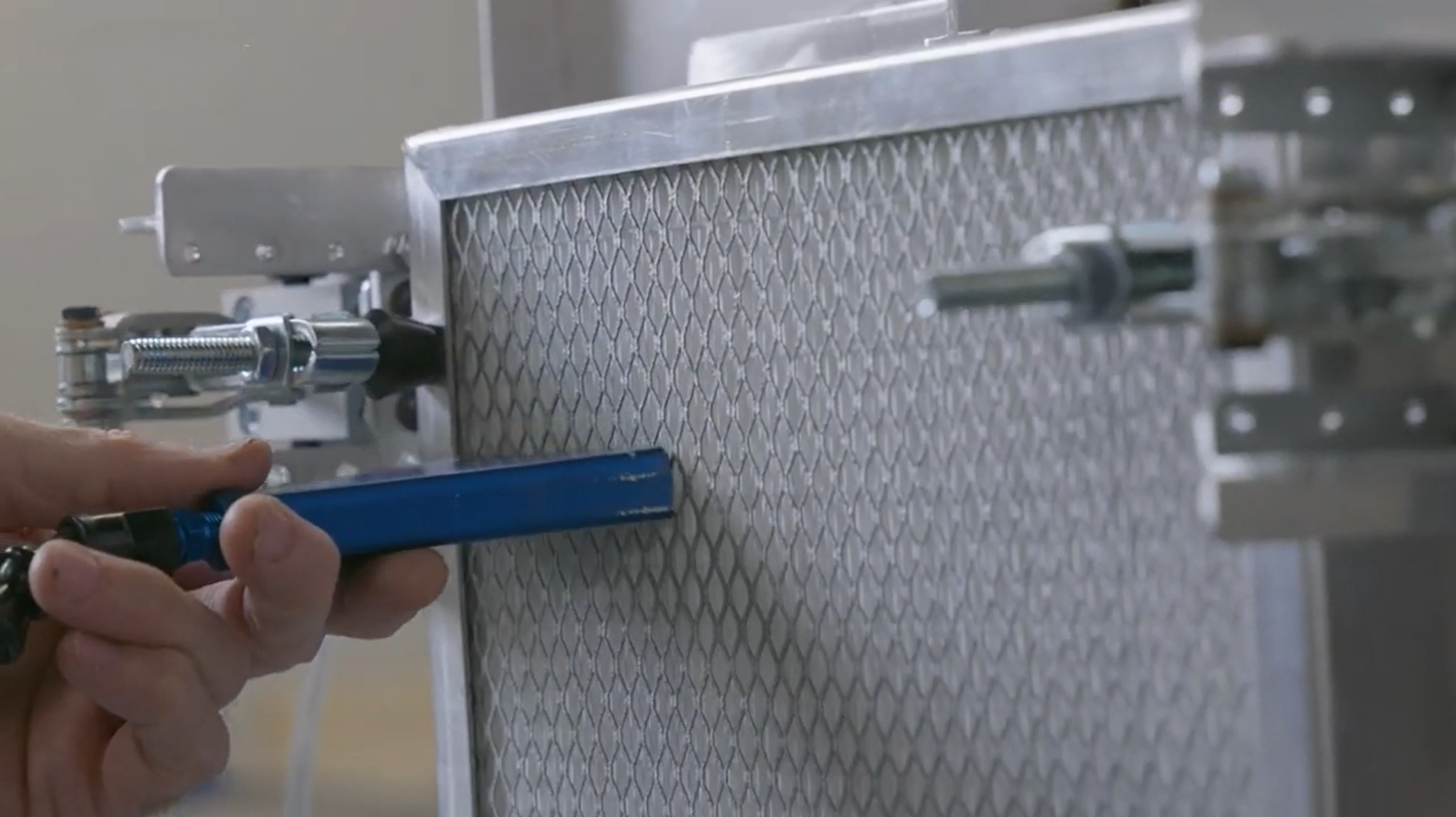But there’s one element most athletic departments overlook in these quests: indoor air quality.
The indoor air your athletes breathe every time they work out, practice, or perform in your athletic facilities could be holding them back.
Today we want to show you the hidden dangers of unsafe air, including the specific ways poor indoor air quality (IAQ) could be harming your athletes’ performance or hindering their recovery.
It’s our goal to help you help your student athletes—and the athletic programs they’re a part of. Here’s the case for why IAQ matters for your student athletes, plus why now is the right time to act and how AirBox can mitigate your IAQ issues.
(Hint: You can improve athletic performance and recovery with cleaner air!)
Understanding the Threats to Cleaner Air
Within any indoor space, a range of pollutants and particulates may collect in the air, especially in spaces with poor or no ventilation. Here’s a quick rundown:
- Particulate matter: A blanket category including dander, dust, mold particles, and anything else that can remain suspended in the air
- Carbon monoxide: A potentially deadly gas, usually a byproduct of fuel-burning sources
- Excessive CO2: While CO2 isn’t a pollutant, it can become concentrated in poorly ventilated spaces and is a sign of low air exchange
- Volatile organic compounds (VOCs): A range of gaseous organic pollutants such as benzene, formaldehyde, and methylene chloride; commonly used in fragrances and cleaning products
Why does this matter? Because these pollutants can build up in indoor air (usually two to five times as high as outdoor air, per EPA studies) and can lead to a variety of problems. And high-performing athletes experience a clear negative impact on performance.
Why IAQ Matters for Athletes
There’s been plenty of research into the effects polluted air can have on athletes and other active individuals, and the results may surprise you.
Lowered cardiovascular performance
First, poor IAQ lowers cardiovascular performance, dampening overall physical performance and recovery. One study published in the International Journal of Preventive Medicine found that high levels of air pollution caused “a significant reduction in the performance at submaximal levels of physical exertion.” The study found a “significant decrease in mean VO2 max [how much oxygen the body can supply during exertion], red blood cell count, hemoglobin, hematocrit, and mean corpuscular volume” among the study participants who endured polluted air compared to those who didn’t.
Another study looked at performance within outdoor air pollution in heavily polluted areas in China, finding that pollution conditions like those of the 2014 Beijing Marathon added five minutes to the top-ten finishers’ times compared to healthy air quality, bumping up to 12 minutes for the average marathon runner (still a relatively fit profile). That’s a significant performance drop — and when we consider that IAQ tends to be exponentially worse than outdoors, the implications on performance in poor IAQ are significant.
Our Airbox scientists take these studies seriously and they are continually improving our product lines to produce the safest air by means of the most powerful technology.
Impaired cognitive performance
High-level cardiovascular performance isn’t the only way poor IAQ threatens student athletes. It also harms cognitive performance.
The EPA points to poor IAQ as a partial or primary cause for all sorts of cognitive performance-inhibiting symptoms, including:
- Headache
- Nausea
- Fatigue
- Chemical sensitivities
A Harvard study gives us verifiable numerical proof, too. It found that response times and throughput both slowed by 1 to 1.5 percent each time PM2.5 (particulate matter 2.5 microns or smaller) increased by 10 micrograms per cubic meter. CO2 concentrations had an even more drastic effect: every increase by 500ppm saw around 1.5 percent slower response times and around 2.2 percent lower throughput.
Cognitive effects like these are harmful to student-athletes, both in their athletic pursuits (learning a new play or scheme or even reacting during play) and in their academic ones.
VO2 and Oxygen are Key to Recovery As Well
Recovery is another key element to progress and performance in athletics, and this, too, depends heavily on oxygen intake. Muscle fibers tear during physical activity, and oxygen is a primary means of recovery for the body.
It’s not hard to connect the dots here: make it harder for athletes to take in oxygen, and you slow their ability to recover from workouts, games, and so forth.
But of course, the converse is true, too: you can improve athletic performance and recovery with cleaner air!
Now Is the Time to Act on Athletic IAQ
We’ve made a pretty clear case that indoor air quality has a significant effect on athletic performance and recovery. Now is the time to act; this is an ideal moment for athletic directors and other decision-makers to push for action on IAQ in athletic facilities.
The COVID-19 pandemic saw many colleges and universities install mitigation technologies including air purifiers throughout classrooms and common spaces. The posture was one of crisis response, a reactive rather than proactive moment. The continuation of academic programs was a mission-critical goal, and so athletic facilities like gyms, locker rooms, and meeting rooms didn’t always get the same level of attention as the core academic areas.
Now, as COVID evolves into weaker strains and continues transitioning to endemic status, the focus on crisis-level mitigation efforts is slowly subsiding, even as the enhanced awareness of the importance of IAQ remains fresh in people’s minds.
That makes right now the perfect time to address air quality in university athletic facilities. The need is easy to understand and explain, and remaining emergency funds such as HEERF I and II, or the more recent HEERF III in the American Rescue Plan may still be available in your state.
AirBox: Your Proven Solution for Athletic Facility Air Purifiers
If you know you can improve athletic performance and recovery with cleaner air, why wouldn’t you invest in improving your school’s IAQ? We’ve shown you why taking action on IAQ is essential and why now is the time to do it. Now let’s talk about how.
AirBox offers a full lineup of powerful commercial air purifiers, including some that are perfect for larger athletic spaces like gyms and others suited to small-to-midsized spaces like locker rooms. AirBox takes a science-backed approach to cleaning the air, one that matches the best practices and recommendations of the CDC, EPA, and more. We use commercial HEPA filter technology that is proven to remove >99.97% of airborne particulates, including those that affect athletic performance.
AirBox products are already being used in educational facilities (including in athletics) across the country, and we’re ready to serve you, too.
Ready to help your student athletes perform better and recover faster?
Get started today with a Safe Air Plan.





